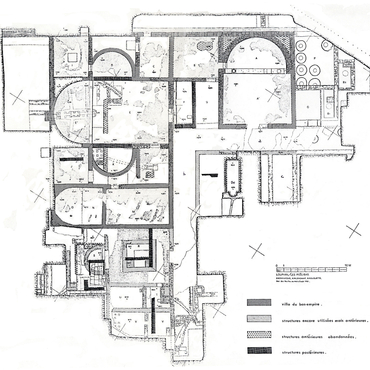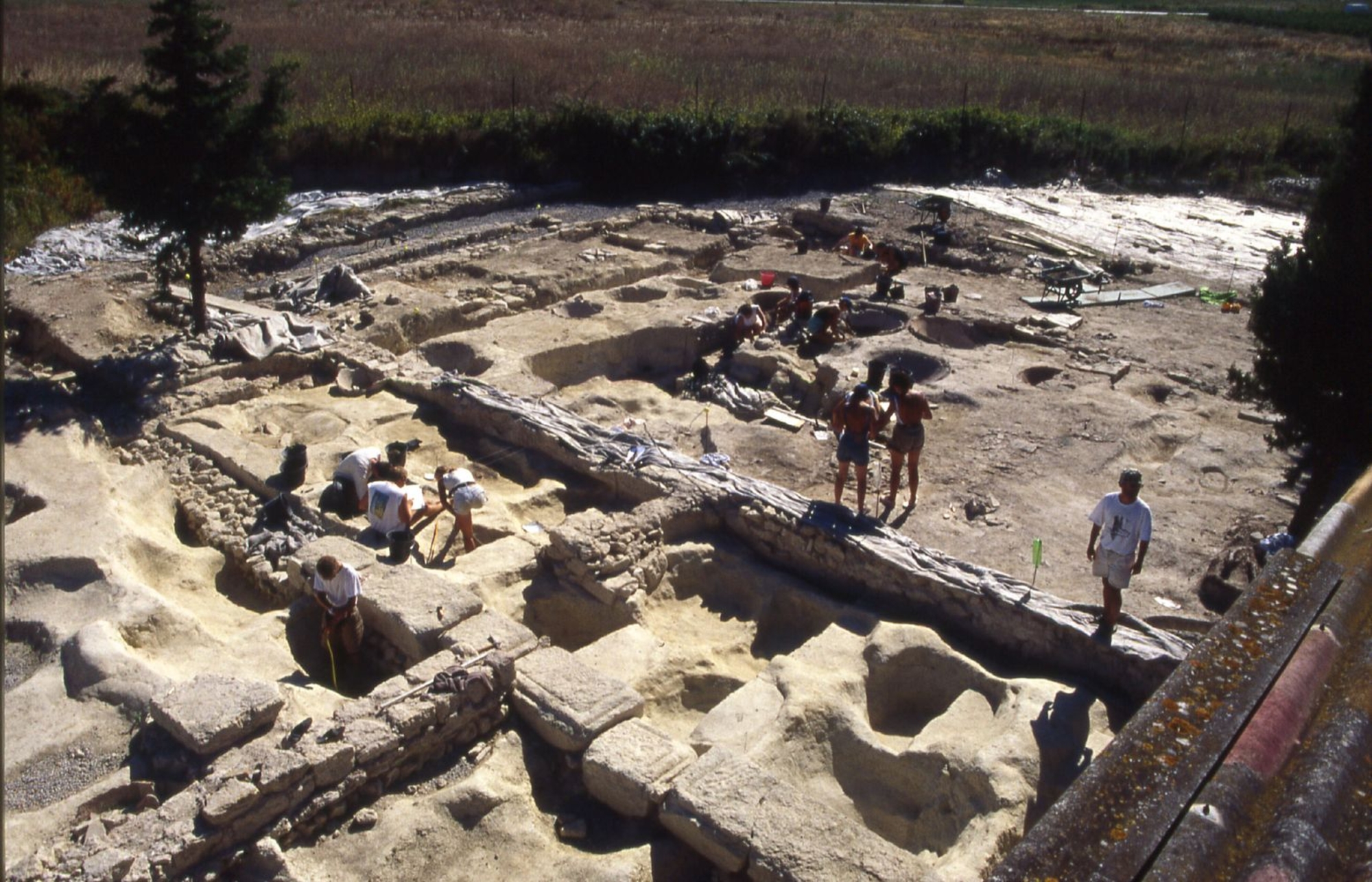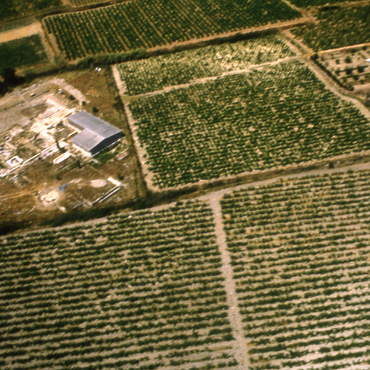
- Home
- Loupian, a villa in Gallia Narbonensis
- An archaeological site for the public
- History of the excavation of the site
A short mention published in a specialist journal in 1930 announced the fortuitous discovery of a vineyard-themed mosaic at Loupian. In 1963, sondages were carried out and located the find. Based on this initiative, a research project was mapped out: the land was acquired in 1967 and the vestiges were listed as historic monuments three years later. In 1968, an experienced amateur, Daniel Rouquette, broke ground for the first time.
From 1976 to 1982, archaeological excavations took place each summer, and explored the villa's residential section. These efforts were modelled after archaeological sites in large cities in the southwest of France. Two specialists from the Centre Henri-Stern, Henri Lavagne and Richard Prudhomme, were brought in to study the mosaics, and published their findings in 1980.
Starting in 1983, in response to changes in national archaeological policy, the Regional Cultural Affairs Directorate urged a shift in orientation of the excavations, which were subsequently entrusted to a young researcher, Christophe Pellecuer. For the next four years, with the support of the ArchéOfactory association, Pellecuer carried out open-area excavations near the residence in order to confirm the dating of the polychrome pavements. His work played a role in the revival of interest in the material culture of Late Antiquity.

